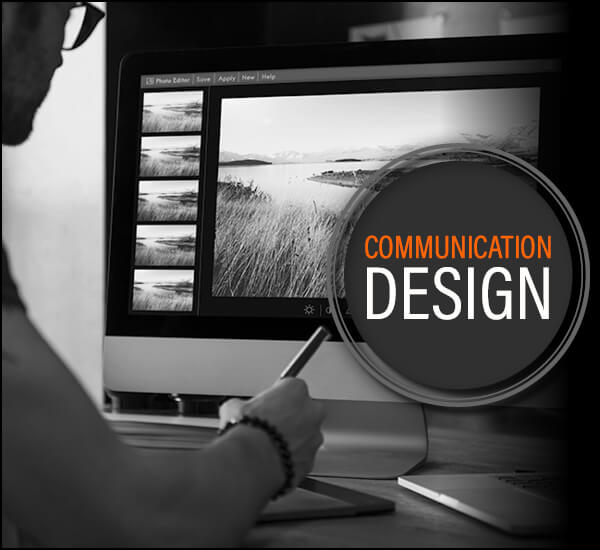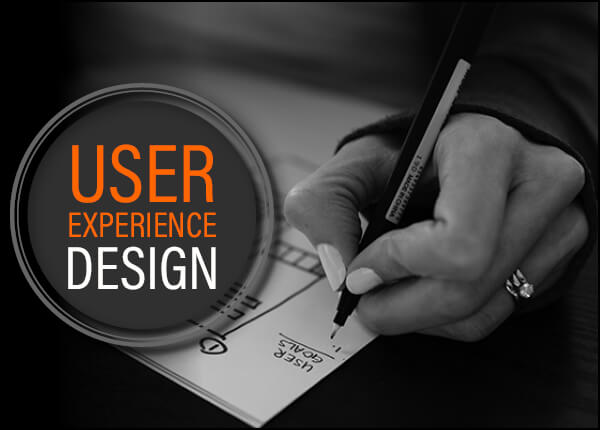
What Are Technology-Driven Design Courses? - Know The 3 Courses at MITSD
Technology Driven Design Courses- There is a lot for us to thrive in the 21st century with the evolving technology day by day. Today technology has changed our culture globally in many ways and so has it changed our education and curriculum. Talking about the B.des degree in specific, it has evolved to model and vision. The bachelor’s in design courses is a four years degree program with specializations in technology-engineering-based, lifestyle, art-craft, digital communication, information technology, etc. Now, with this new technology-based learning, courses such as Product Designing, Communication Designing, Graphics Designing, Multimedia Designing, VFX Design, Visual Communication, and Game Designing, etc have been a part of the B.des courses specialization.
MIT School of Design (MITSD), Pune is situated on the MIT Academy of Engineering campus. To satisfy the demands of the industry, we at MITSD have selected 3 core disciplines like Product Design, User Experience Design, and Communication Design courses which can be taken up after class 12th. Go through this blog to understand the Bachelor of Design courses in depth.
MIT School Of Design - Overview
The design profession has reached its BEST globally where Chief Design officers are taking business decisions for them, business consulting companies have already started offering design services in their portfolios. The MIT School of Design is affiliated with Savitribai Phule Pune University and is under the same roof as the MIT Academy of Engineering, Pune. The new school of design is mentored by MIT Institute of Design, Loni which is 16+ years into design education and considered as one of the best private design institutes in India. Our motive is to provide a technology-enabled design curriculum. Some of the obvious reasons that set up apart from the rest of the institutions are:
- We look forward to building a sensitivity about human emotions by using appropriate technology with a sustainable focus in all the activities.
- We focus on adapting Technology for solution building along with blue-sky thinking and skill enhancement.
- Our approaches are more practical & real, implementable assignments/mini projects and graduation projects in 3rd and 4th year is something we look up to as an institution.
- Being close to MITAoE we always look forward to collaborating with engineering disciplines for core technologies, better project viability, computer/programming, and real-time prototyping.
- We believe in Exploring future technologies to build concepts/working prototypes that can be refined/implemented further in actual products.
- The courses will have a lot of avenues for students to cross learn by way of Major and Minor programs along with doing multiple courses in parallel.
MIT School of Design - Courses Offered
MITSD aims to inculcate young minds who are willing to pursue a Bachelor’s of design degree with technology, methodologies, and new modern approaches. For the same, we have started with three of the best technology-enabled design courses that are explained further below:

Product Design
The courses are to prepare our students for various product designing industries globally. We as an institute cover the courses in a way to help students understand concepts like Design Ethnography, Design Research, Ergonomics, Design Process, Strength of Materials, History of Design, Green Design, Sustainable Design, and System Design. The courses promise to emphasize holistic learning.
With the techniques and skills learned in these courses systems and services are created by industries and companies to be used in homes, workplaces, institutions, places of leisure, and outdoor spaces for the public. Business segments like healthcare, digital products, appliances, specialty engineering products, transportation design, products that assist in improving the quality of life, and products designed with sustainability; offer broad avenues for product designers. The graduating students will get various opportunities to work in Industries based on Artificial intelligence, augmented reality, virtual realities, the Internet of Things, Gaming, software, and many more
Communication Design
A bachelor’s in communication design is all about knowledge and technology-based learning in the visual communication design world. The courses are designed to introduce various communication media like Graphics, motion graphics, interaction, and Animation-film broadly to our students. Being a student of Communications Design one can find a number of opportunities in advertising, motion and broadcast graphics, corporate branding- identity design, typography, editorial, and publication design, information design, illustration, photography, packaging, design for social impact, broadcast graphics and film titles, web and game interface design, interaction, environmental and exhibition graphics, merchandise, signage and pictogram systems, online and offline shaping of visual form, and in User interaction design. The graduating students have opportunities to work in Industries based on Artificial intelligence, Augmented reality, virtual reality, the Internet of Things, Gaming, software, Mobile, Automobile UX.


User Experience Design
This course is all about solving user’s problems by designing products, services, events, systems, and environments with a focus on delivering a delightful product experience where its cultural and contextual relevance is most important. Visual Interface Design, UX Design Methods, User Study, Usability Engineering, Tangible Interaction Design, Research Methods, and Techniques. There are conceptual courses like Design for Special Needs and Design for 2050 in which emerging trends for Design Futures, Speculative Design, Universal Design, and Inclusive Design are explored. The graduating students have opportunities to work in Industries based on Artificial intelligence, Augmented reality, virtual reality, the Internet of Things, Gaming, software, Mobile, Automobile UX
MIT School of Design - Careers In B. Des
There are more than three design courses in India, with the change in technology most of the newly introduced courses are based on computer-aided design. There are some of the best designing courses which can be opted by a student for potential career growth. Here are a few of these design courses that a student can pursue after completing class 12th.
- B.Des Industrial design/ product design
- B.Des Visual Communication
- B.Des Transportation design
- B Des Interior spaces & Furniture design
- B.Des Lifestyle & Accessory Design
- B.Des Textile Design
- B. Des Fashion design
Career after Bachelor’s Of Design at MITSD
The trend of education has somewhat changed in India now, more of the students are now willing to explore various career opportunities. The change has brought about a lift in various job opportunities across the globe. One of such Careers is B.Des which has now been technology-driven and has been used in many computer-related Careers. Therefore, the employment rate for designers is higher today as compared to many other courses. The various areas of employment for a B.des graduate soon after completing their degree are listed below:
- Multinational companies
- Corporate Houses
- Design consultancies
- Public and Government Sectors
- Furniture- Retail- Exhibition design/ Manufacturing
- Media houses
- Ad & Film domain
- VFX & animation studios
- Information technology
- Emerging technology companies
- Product & Service start-ups
B.Des Top Recruiters And Package
There are a plethora of job opportunities for a designer today. The best thing about pursuing B.Des courses is that it is not industry-driven and students can find job opportunities from various industries and recruiters. Some of the top recruiters who hire designers from these fields are listed below for reference.
Top Recruiters:
- Tata motors
- Mahindra & Mahindra Ltd.
- GE Healthcare
- Godrej
- Bajaj
- Bosch
- Hindustan Unilever Limited
- Tanishq
- Flipkart
- Tata Consultancy Services
- Microsoft India Pvt. Ltd.
- Cognizant
- Mindtree
- J.P. Morgan
- Zomato
- Malabar Gold & Diamonds
- Myntra
- MediaShala
Now, moving on to the most important aspect of choosing a career option that is the package that students can get after completing their courses. Tabulated below are some of the design courses along with the average annual salary a student can bag soon after graduation.
| B.Des Job Profiles | Average Salary Package (in Rs lakh) |
|---|---|
| Product Designer/Industrial designer | 5.50 |
| UI/UX Designer | 6.00 |
| Graphic Designer | 5.00 |
| Fashion Designer | 3.50 |
| Textile Designer | 4.00 |
| Art Director | 3.50 |
MIT School of Design - FAQs
Q.1 How much does a B Des graduate earn in India?
Ans: The salary of Bachelor in Design graduates varies as per the specialization in which they have pursued the courses. However, as per PayScale, the average salary of a BDes graduate in India is 4 to 5 lakhs lakh per annum.
Q.2. What is the B Des course duration in India?
Ans: The course duration for BDes in India is 4 Years.
Q.3. What is the scope of a Bachelor of Design?
Ans: Many career options are available like Design Director, Fashion Director, Design Manager, Textile and Surface Developer, Fashion Designer, Quality Controller for Fabric and Apparel, Art/Set Director, Jewelry Designer, Graphic Designer, Fashion Photographer, Furniture Designer, Textile Designer, Brand Manager, etc.
Q.4 What is B Des in Product Design?
Ans: It is one of the most popular courses in BDes because it involves the skills of art and technology, which is the need of the hour. Many leading techs hire Product Design graduates in their design and development team work closely with other departments to model and vision any product.
Q.5 How is MITSD different from other Design schools?
Ans: The major difference between MITSD and other design schools is that we look forward to collaborating with engineering students for our prototyping and project viability. Also, we are affiliated with Savitribai Phule Pune University and are completely technology-driven. We look forward to providing high-quality education to upskill our graduates and prepare them to be industry-ready.